Volunteering to save Borneo’s endangered species
- HeartLife Trippers

- May 19, 2023
- 6 min read

Orangutans, pygmy elephants, rhinoceroses, wild cats, flying foxes, and proboscis monkeys are among the endangered species found in Sabah, Borneo.
Several organizations in Sabah, Borneo, provide volunteer opportunities for people interested in wildlife conservation to help protect and conserve these species and their habitats.
Volunteering with these organizations allows you to make a significant contribution to the protection of some of the world's most endangered species.
This post is for you if you want to help make the world a better place by working with Borneo's distinctive creatures.
We'll look at some of the extraordinary creatures found in this area and how to get involved with some of the organizations trying to safeguard Sabah's endangered wildlife.
1. The Borneo Sun Bear
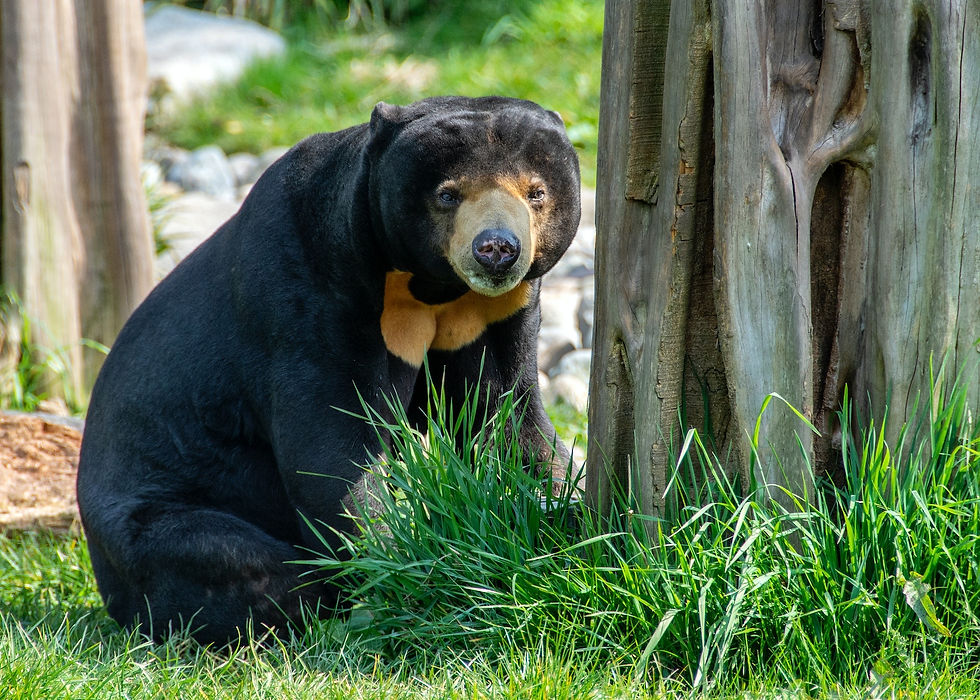
The Bornean sun bear, the world's smallest bear species, is unique to Sabah, Borneo, and has its own sanctuary and rehabilitation center, the Bornean Sun Bear Conservation Centre (BSBCC), which offers volunteer opportunities.
The Sandakan, Sabah-based center is committed to the rescue, rehabilitation, and release of orphaned or unlawfully held captive sun bears. It also conducts research on sun bear behavior and ecology and strives to educate the public on the need to protect this unique species and its habitat.
Volunteers at the BSBCC can assist with chores such as meal preparation, cleaning, and maintenance, as well as monitoring and documenting bear behavior.
More information on visiting or volunteering at the Bornean Sun Bear Conservation Centre can be found on their website, www.bsbcc.org.my.
2. The Borneo Pygmy Elephant and the Sumatran Rhino
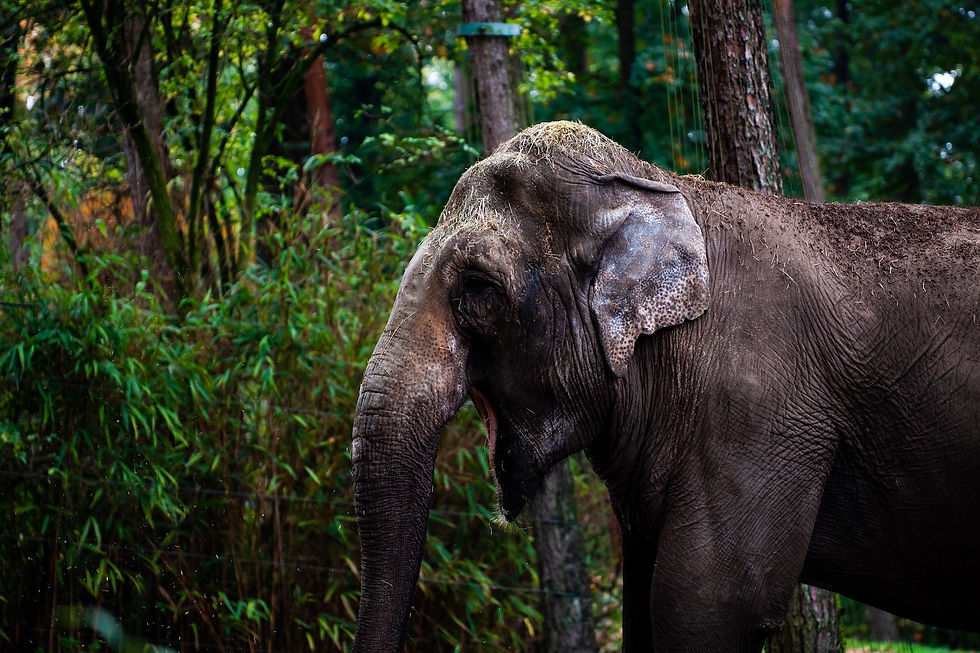
Sabah, Borneo, is also home to the famed and endangered Borneo pygmy elephant and Sumatran rhino.
The Borneo pygmy elephant, a subspecies of the Asian elephant, is the world's smallest elephant and can only be found in Borneo. Due to habitat loss, fragmentation, and human-wildlife conflict, the species and its number are estimated to be approximately 1,500.
One of the world's most endangered large mammals to date is the Sumatran rhino. Only a few hundred of this rare species, sometimes known as the "hairy rhino, remain in the wild.
Because both the Borneo pygmy elephant and the Sumatran rhino are highly endangered, their conservation is crucial to preserving Sabah's biodiversity and ecological integrity.
The Borneo Elephant Sanctuary is in Kinabatangan, whereas the Borneo Rhino Sanctuary is in Tabin Wildlife Reserve.
Volunteers can help the sanctuary's conservation efforts by helping with tasks including habitat restoration, monitoring, and data collection.
3. The orangutan
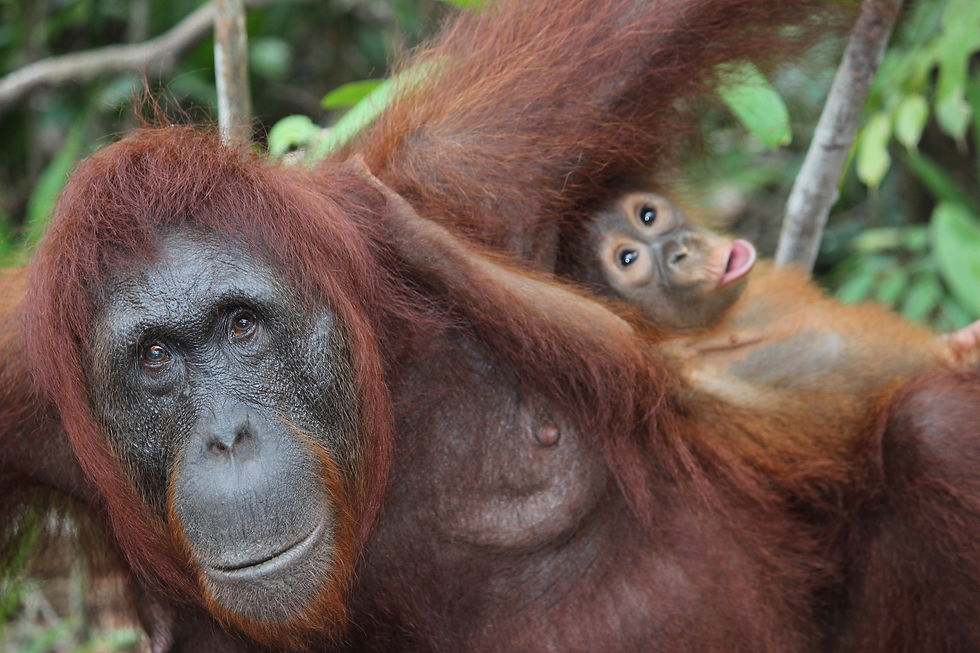
The Bornean orangutan, a species of giant ape found exclusively on the island of Borneo, which is shared by Sabah, Indonesia, and Brunei.
Orangutans are essential to the health and diversity of the rainforest ecosystem. They are exceptionally clever and gregarious animals, but the species is in jeopardy from habitat degradation, killing, and the illicit pet trade.
The Sepilok Orangutan Rehabilitation Centre, located near Sandakan in Sabah, is a world-renowned facility devoted to the rescue, rehabilitation, and release of orphaned and displaced orangutans.
The center also conducts research on orangutan behavior and ecology, as well as working to advocate the conservation and sustainable use of the rainforest ecosystem that is home to these beautiful gentle giants.
Volunteers at the Sepilok Orangutan Rehabilitation Centre can help monitor, feed, and clean the orangutans, as well as conduct conservation education and awareness campaigns.
4. The sunda clouded leopard, the Bornean bay cat, and the marbled cat
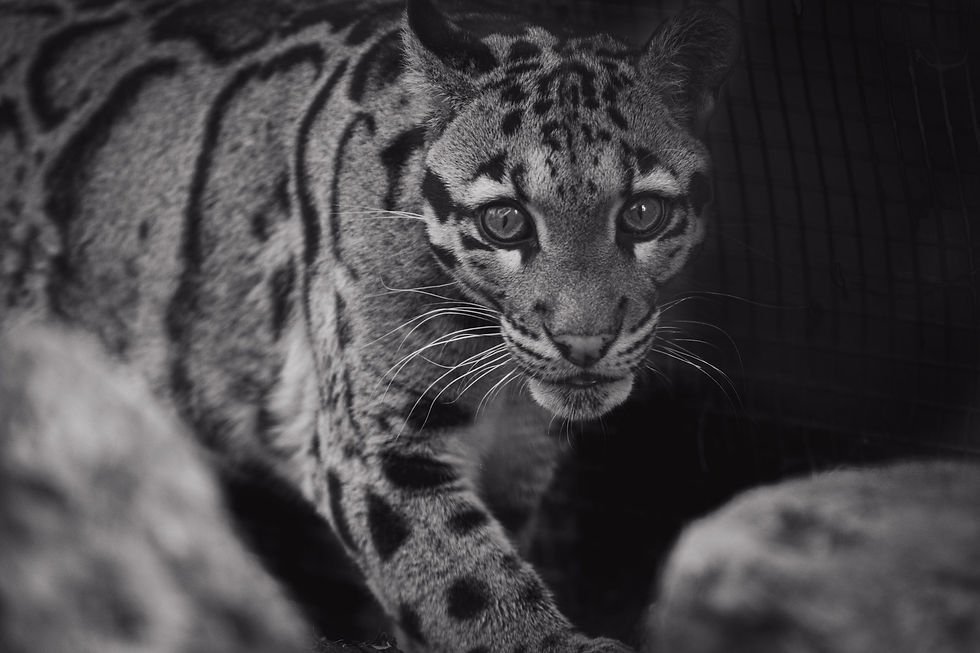
Sabah, Borneo, also has various wild cat species, including the sunda clouded leopard, Bornean bay cat, and marbled cat.
The sunda clouded leopard is a medium-sized wild cat native to Southeast Asia, particularly Borneo. It is recognized for its cloud-like markings on its coat and is a key predator in the rainforest ecology.
Both the Bornean bay cat and the marbled cat are smaller than the sunda clouded leopard and are only found in Borneo. They are elusive and mysterious, and little is known about their behavior and environment.
Although these wild cats are rare to detect in the wild, various conservation organizations in Sabah, Borneo, such as the Borneo Rainforest Lodge and the Danum Valley Field Centre, are dedicated to their protection and conservation.
These organizations do research on these cats and their habitat, create awareness about the risks to these species, and collaborate with local communities to promote sustainable land use practices that aid in the conservation of their habitat.
5. The Flying Foxes
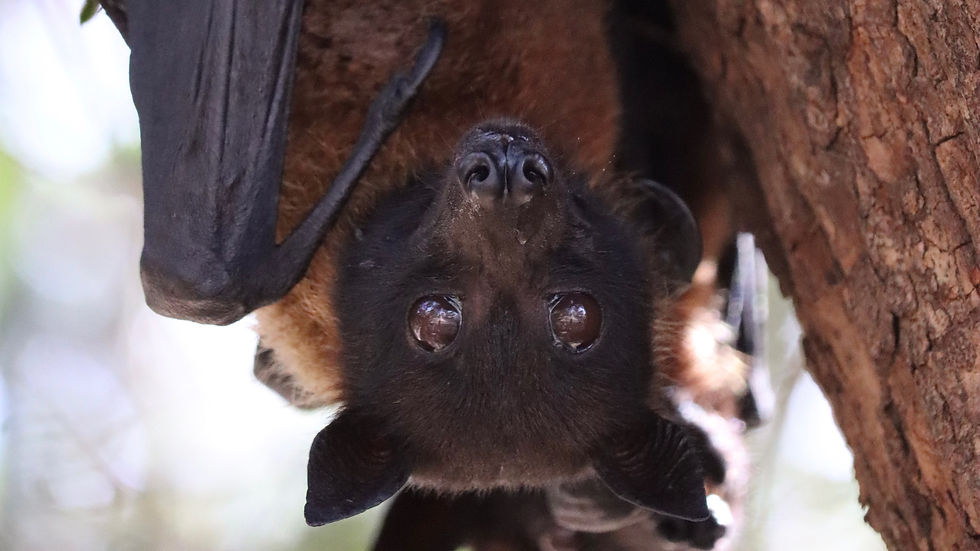
Flying foxes, often known as fruit bats, are a huge species of bat found across the tropics, including Sabah, Borneo.
Sabah, Borneo, is home to numerous species of flying foxes, including the Island flying fox, variable flying fox, and black-bearded flying fox.
These bats are known for their large size, with wingspans of up to 1.5 meters (5 feet), and their distinctive fox-like faces.
At dusk, flying foxes can be spotted swooping over the rainforest canopy, emerging from their roosting locations in search of fruit and nectar.
These bats are vital pollinators and seed dispersers who contribute to the health and diversity of forest ecosystems; however, these winged species are threatened by habitat loss, poaching, and persecution.
Conservation initiatives are underway in Sabah, Borneo, and worldwide to safeguard these bats and their habitat, and you may help by learning more about them and their function in the ecosystem.
6. The proboscis monkey
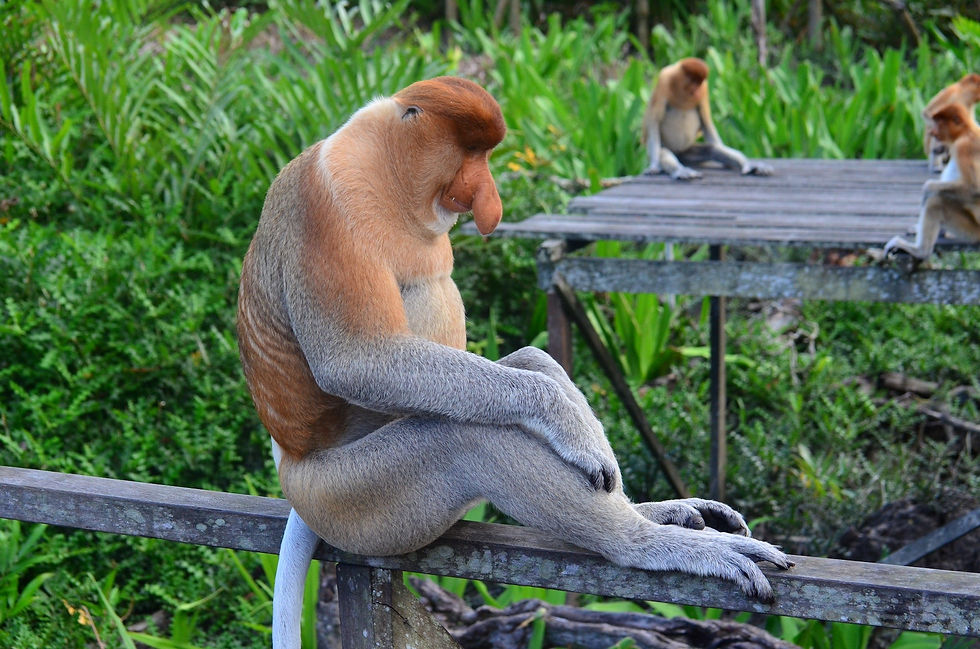
The proboscis monkey, one of the largest monkey species, with males reaching up to 75 cm (30 inches) in length and weighing up to 25 kg (55 pounds), is only found in Borneo's mangrove forests and riverine ecosystems, especially Sabah Borneo.
The species is named after its distinctively large, fleshy nose, which is supposed to help attract mates and regulate body temperature. It is also noted for its potbelly and distinct vocalizations, which include honks, grunts, and screams.
The proboscis monkey, like many other species in Sabah, Borneo, is threatened by habitat loss caused by logging, agriculture, and industrialization.
Conservation efforts to safeguard the species and its habitat are underway, including the creation of protected areas and the application of sustainable land use practices.
The Kinabatangan Wildlife Sanctuary is home to one of the largest populations of the species.
Volunteering with organizations that strive to protect and conserve wildlife in Sabah, Borneo, is available, including those that focus on the animals we've discussed, such as orangutans, pygmy elephants, rhinoceroses, wild cats, flying foxes, and proboscis monkeys.
Volunteer opportunities are also available through the Borneo Rhino Alliance, the Borneo Conservation Trust, and the Danau Girang Field Centre.
These organizations focus on a variety of conservation concerns in Sabah, Borneo, including the protection of pygmy elephants, rhinoceroses, and other endangered wildlife.
Many of these organizations also provide research and fieldwork opportunities for volunteers, allowing them to obtain hands-on experience in conservation biology and wildlife ecology.
It is crucial to note that helping animals in Sabah, Borneo, frequently necessitates a major time and resource commitment, as well as a willingness to work in isolated and difficult locations. Volunteering, on the other hand, may be a gratifying and life-changing experience for people who are enthusiastic about animal conservation and want to obtain personal experience in the field.
Follow these general steps to become a volunteer at one of the organizations mentioned:
1. Learn about the organization, its mission, and the volunteer opportunities it provides. This will assist you in determining whether the organization is a good fit for you and your objectives.
2. Before applying, make sure you meet the prerequisites. Each organization’s volunteer requirements may differ, such as minimum age, education, talents, and physical fitness.
3. Complete and submit the online application form and attach any relevant documents, such as a résumé, cover letter, or reference letter.
4. After reviewing your application, the organization will contact you with further instructions, such as scheduling an interview, seeking additional information, or delivering orientation materials.
5. If you are selected, you will most likely be required to attend an orientation and training session prior to beginning your volunteer work. This will assist you in learning about the organization’s rules, procedures, and expectations, as well as providing you with any required skills and information.
6. You can begin volunteering when you have completed orientation and training. To reach the organization’s goals, you must be willing to work hard, follow directions, and collaborate with others.
Remember that while volunteering with wildlife in Sabah, Borneo, can be a wonderful and challenging experience, it does necessitate a major time, resource, and energy investment.
The following is the contact information for some of the organizations mentioned:
Sepilok Orangutan Rehabilitation Centre:
Website: https://www.orangutan-appeal.org.uk/volunteer-sepilok/
Email: info@orangutan-appeal.org.uk
Borneo Rhino Alliance:
Email: info@borneorhinoalliance.org
Borneo Conservation Trust:
Website: http://www.borneoconservation.org.my/get-involved/volunteer/
Danau Girang Field Centre:
Website: https://dgfc.life/volunteer/
Email: dgfcvolunteer@gmail.com
Check the official websites of these organizations for the most up-to-date information about volunteer opportunities and contact information. Furthermore, certain organizations may have unique rules or standards for contacting them, so make sure you thoroughly read and follow these instructions.




Comments